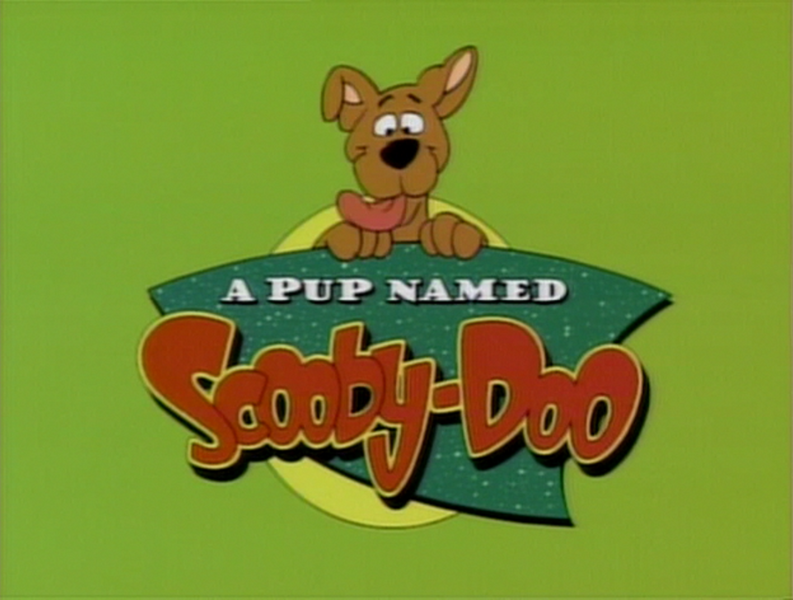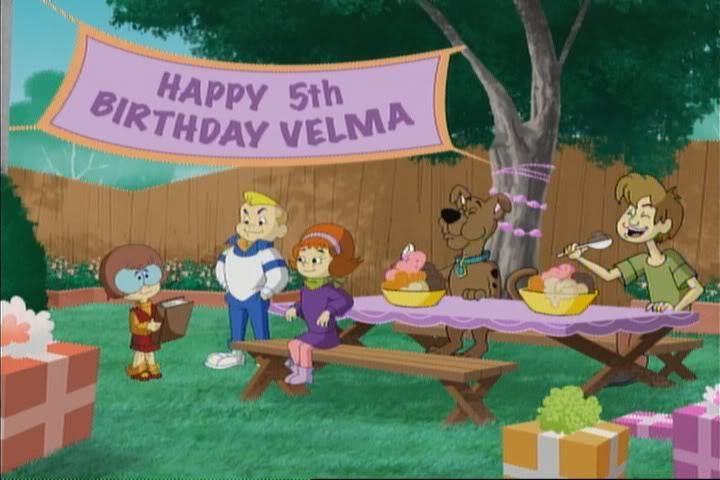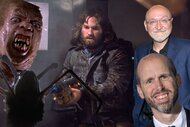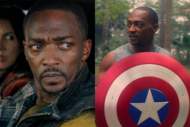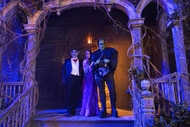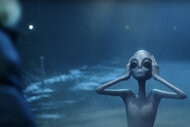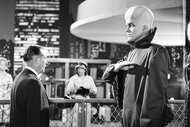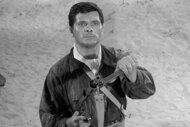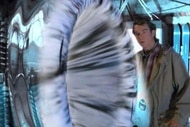Create a free profile to get unlimited access to exclusive videos, sweepstakes, and more!
The inside story of how A Pup Named Scooby-Doo took Scooby and the gang in a wacky new direction
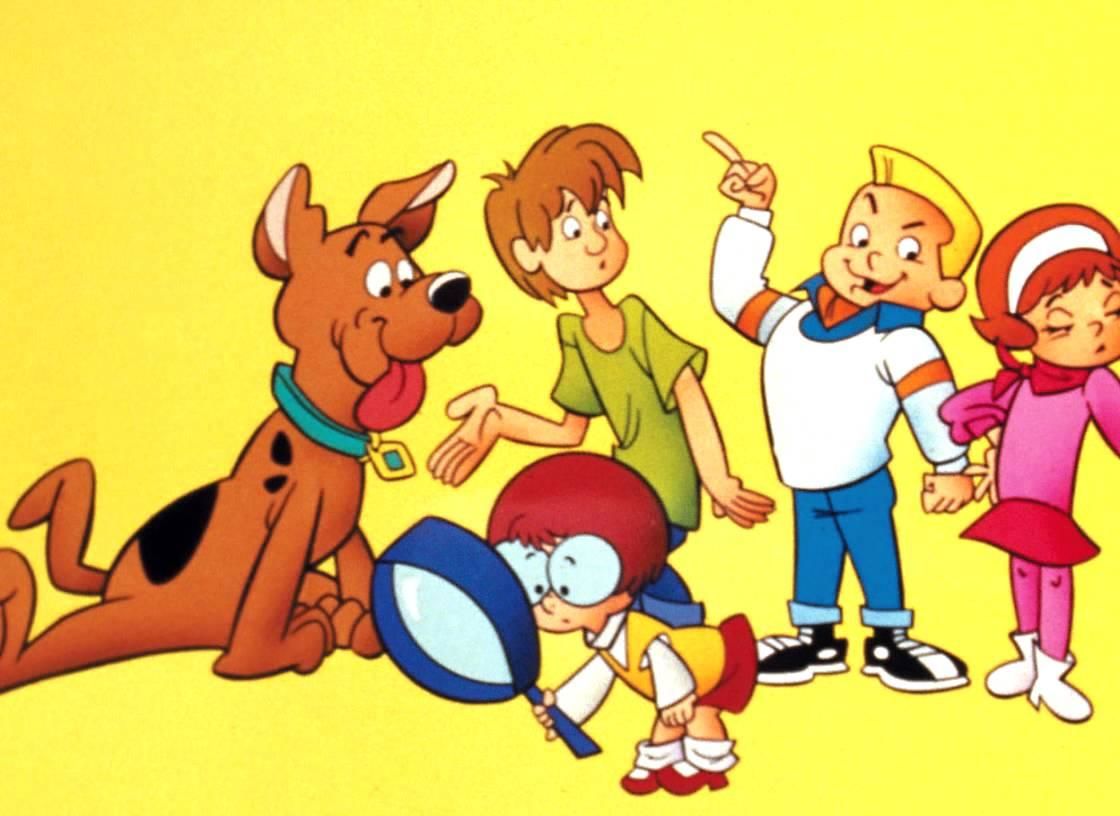
After over 50 years of solving mysteries and unmasking costumed criminals, Scooby-Doo finally gets to star in his very own fully animated movie. In Warner Animation Group’s Scoob!, the first in a planned series of films made to re-introduce characters created by the legendary animation studio Hanna-Barbera, we’ll see how the iconic Great Dane first met Shaggy, how he got his famous name, and how the two best friends got involved with Fred, Daphne, and Velma, years before their first ride in the Mystery Machine.
When the first trailer hit the internet this past December, we saw a glimpse of the gang's first meeting, as younger versions of Scooby and Shaggy ran into their future friends while trick-or-treating on Halloween. For kids who have been growing up with Scooby in the past couple of years, this is perhaps the first time seeing the easily frightened canine and friends as one of their peers, but for those of us who remember being in front of the television on Saturday mornings in the 1980s, or home on summer vacation in the early 1990s, we know that this isn’t the first time Scooby has been shown as a puppy.
By the late 1980s, Scooby-Doo wasn’t exactly in the dog house, but he had certainly seen better days. 1985’s The 13 Ghosts of Scooby-Doo — in which the Scooby went up against real monsters instead of criminals in costumes — had been canceled after one season. The following two years would pass without a new Scooby series, the longest gap since the 1970s. As he was approaching his 20th birthday, ABC was still interested in Scooby, but the network wanted to know if there was anything new that could be done with the easily frightened canine.
That’s the question ABC executives Jennie Trias and Amy Simon asked Hanna-Barbera animator, storyboard artist, writer, and lyricist Tom Ruegger. As the story editor for Scooby since 1982, he felt it was time for Scooby to have a fresh start. “I wanted to do something different," Ruegger told SYFY WIRE. “I didn’t just want to do the same thing.” Instead, he wanted to show Scooby in a way kids had never seen before: as one of them.
Originally titled Scooby-Doo – The Puppy Years, 1988’s A Pup Named Scooby-Doo was the eighth series in the Scooby franchise and featured Scooby, Shaggy, Fred, Daphne, and Velma — all together as the main cast for the first time since 1980’s Scooby-Doo and Scrappy-Doo — as middle school kids solving mysteries in the town of Coolsville. Its pilot episode, "A Bicycle Built for Boo!," was directed by none other than William Hanna himself.
Ruegger remembers how he was able to get the animation legend on board: “I went up to him and said, ‘Mr. Hanna, this is my first full-on producing job, I want to get this right, and I was wondering if you would have the time to direct the first episode.’” Hanna initially refused, but that didn’t stop Ruegger from asking. “I kind of pestered and begged them,” he says, and after a while, Hanna relented, telling Ruegger, who’d been with the company for over a decade at that point: “Alright, I'll give you one week.”
Hanna took the storyboards and went up to a private office on top of the studio and got to work, directing the episode with the assistance of a metronome. “That's how he directed every cartoon he ever made,” Ruegger says. He describes the pilot today as one of Hanna’s “last great directing jobs.”
Pup was part of a trend in children's animated programming in the 1980s wherein iconic American cartoon characters were being reintroduced as small children. It became known as “Babyfication,” and it all started with 1984’s Muppet Babies, which ran for seven seasons and won four straight Daytime Emmys for Best Animated Program (1984-88).
Muppet Babies spawned many imitators: The Flintstone Kids, The New Archies, Jungle Cubs, and Tom & Jerry Kids. Ruegger says the success of Muppet Babies had nothing to do with his decision to make Scooby younger, and also wanted to note that unlike some of the other shows mentioned above, “our show was a success.”
While the series followed the traditional “monster/mystery of the week” plot format established in the original 1969 series, Pup separated itself from every other Scooby cartoon with its wackier tone, brighter color palette, soundtrack inspired by mid-1950s and early '60s American pop-rock, and Tex Avery-inspired comedy that was more in line with Avery’s classic Looney Tunes than anything Hanna-Barbera.
Ruegger also saw Pup as an opportunity to pay homage to Scooby’s almost two-decade career on TV, mainly by poking fun at many of the tropes and conventions of the franchise, starting with the quartet of amateur detectives and their talking puppy.
While Shaggy and Scooby were much like their adult counterparts — scaredy-cats with large hearts and equally large appetites — the personalities of the others who together made up “The Scooby-Doo Detective Agency” were more exaggerated to fit the series tone.
Fred, known historically as a rather plain character whose most interesting feature is that he wears an ascot, was now a dim-witted conspiracy theorist. He usually believed that the culprits were either mole people, aliens, BigFoot, or the neighborhood bully Red Herring — who was the actual monster in one episode (for a small inconsequential crime. However, because of a bet he made with Daphne, Fred couldn’t accuse him). Daphne, meanwhile, was as skeptical of the supernatural as Fred was convinced. She was also more pushy, vain (more afraid of getting her boots dirty than any monster), and extremely wealthy.
Velma, the smallest of the group, was the actual brains of the Detective Agency, doing most of the sleuthing. During the early days of production, Ruegger had the idea that Velma would only say one word, “Jinkies.” However, that didn’t go well with the series writers. Talking to Pop Geeks in 2018, Ruegger explained that, “eventually it became too exhausting a battle.” Velma would say her iconic catchphrase whenever she found a clue, but she would also have other lines, something that Reugger regrets letting happen, telling Pop that “she would be a bigger, better, and more memorable character today if all she ever said had been ‘Jinkies.'"
He would fare much better when it came to the series background score. Inspired by the 1986 film adaptation of Little Shop of Horrors, Ruegger brought his tape recorder with him while driving to the Hanna-Barbera Studios in Los Angeles one morning. “I would start to scat, ‘Sca-dooby-da-dooby-Scooby-da-doo-baa,’” he says “I did a lot of those and handed them to our music guy, John Debney, who transcribed them and brought in three singers to do the score.”
The sound editors weren’t too pleased by having to mix an extra bit of sound under the dialogue. “When they’re making a show in the editing department,” Ruegger explains, “they have three things they want to deal with: the dialogue, the sound effect, and the music.” He says that the addition of the background score, “really threw them for a loop; they didn't want to put it under dialogue.” Ruegger wound up winning that battle and the series is all the more individualistic for it.
Pup was the first to be inked digitally, the first to earn the Scooby franchise an Emmy nomination (losing the win to Disney’s The New Adventures of Winnie the Pooh), and the last TV series to feature Don Messick as the voice of Scooby-Doo. “Don was amazing,” Ruegger says. “He could do two voices at once, I mean he literally could, it was like he had a double larynx.” Messick — who also voiced other iconic animated characters such as Dr. Benton Quest, Bam Bam Rubble, Papa Smurf, Ranger Smith, and many more — voiced Scooby a handful of times afterward, in TV specials and video games, before passing in 1997. “That character belongs to Don Messick,” Reugger says. “I know Frank Welker [the voice of Scooby since 2002 and the original voice of Fred]. God bless him, but Don was the real voice behind Scooby-Doo.”
Pup ran for 27 episodes spread over four seasons, ending on Aug. 17, 1991. Ruegger only worked on the first season before being recruited by Jenny McCurdy to join the revitalized Warner Animation Studio. Ruegger credits his work on Scooby with him getting the gig. “The fact that I went to the trouble of making the show kind of different and adding a lot of that kind of zany stuff is what got me the job [with] Steven Spielberg on Tiny Toon Adventure,” he says. He would go on to produce and write for Tiny Toon and other cartoon classics of the 1990s such as Animaniacs, Pinky and the Brain, and Freakazoid.
Pup would continue in reruns on various networks and is currently streaming on Boomerang. It would be the final new Scooby TV series for 11 years until 2002’s What’s New, Scooby-Doo? The 2002 series would pay homage to Pup in a flashback sequence explaining Velma’s extreme fear of clowns, with the art style changing to match the 1988 series, establishing that Pup was, as Ruegger always intended it to be, a prequel.
It’s been over 30 years since Sept. 10, 1988, when the pilot first aired on ABC Saturday Morning, and almost 20 since “The Scooby-Doo Detective Agency” solved its final case before facing cancellation. It is a testament to the series that when I saw the new film’s first trailer and saw Scooby and the gang as kids, Pup Named Scooby-Doo was the first thing that came to my mind.
There have been a number of Scooby series since Pup. However, with its unique look, its meta take on the franchise, and perfect use of music, it is arguable that nobody has presented “those meddling kids... and that puppy” to kids better than Ruegger did in 1988.
